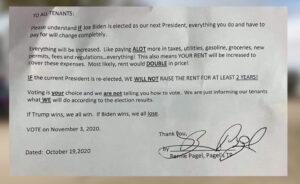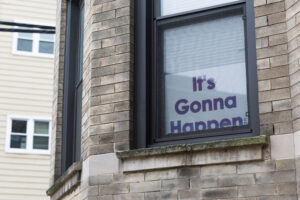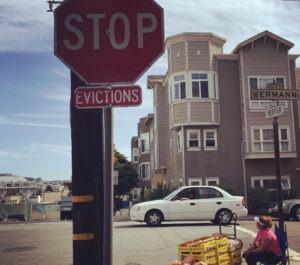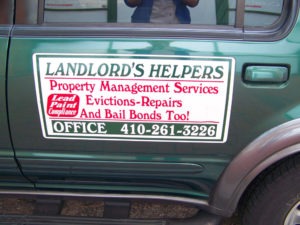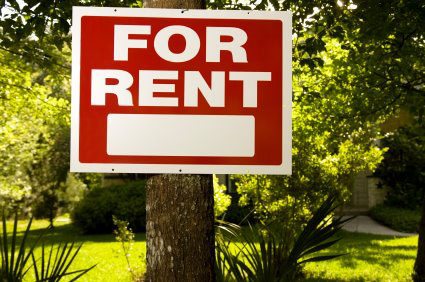
July 21, 2017; Wall Street Journal
Last week’s Wall Street Journal explored the business of Wall Street landlords. These are investment companies which purchase single-family homes across the country to rent to families, many of whom were displaced from homeownership in the Great Recession.
The article, “Meet Your New Landlord: Wall Street,” profiled the expansion of investor-owned, single-family rentals. Despite the end of the Great Recession of 2007 eight years ago, the homeownership rate in the U.S. continues to be at low levels. According to the article, “The buying spree amounts to a huge bet that the homeownership rate, which currently is hovering around a five-decade low, will stay low and that rents will continue to rise. The investors also are wagering that many people no longer see owning a home as an essential part of the American dream.”
Americans have been trained to believe that homeownership is as American as apple pie. Few are aware that the American Dream of homeownership is actually a social construct created by the real estate industry and its allies in the political classes. As Professor Marisa Chappell writes in the Washington Post, “World War I-era real estate agents and the federal government launched the effort to idealize homeownership through ‘Own Your Own Home’ campaigns that associated single-family homeownership with character, thrift and patriotic Americanism.” Then, after World War II, the campaign was revived and policies were created to combat the Depression-era innovation of “public housing.”
A bifurcated system emerged based on race and income; low-income and minority households being renters while middle-income whites became homeowners. Middle class white households were subsidized through easy credit, mortgage interest tax deductions, and interstate highways that opened up suburban communities. Today, we see the American Dream remade. As more white and middle class households are choosing rental over ownership, Wall Street has responded with two new products: single-family rental and “rent-to-own” models.
Sign up for our free newsletters
Subscribe to NPQ's newsletters to have our top stories delivered directly to your inbox.
By signing up, you agree to our privacy policy and terms of use, and to receive messages from NPQ and our partners.
A shift in the financing for single-family rentals marks the maturing of the Wall Street landlord business model. While the initial plan of the Wall Street landlords was to scoop up foreclosed homes at bargain rates and rent them until the homeownership market bounced back, investor owners are now seeking conventional long-term financing for their projects. The New York Times features a story on Wall Street landlords (and others) reaching out for conventional mortgage financing from Fannie Mae and Freddie Mac. The prospective homeowner of today is a suburban middle-class renter. Don’t think of this as a “coastal” phenomenon; single-family rentals do best in Rust Belt communities. That alone should indicate that this is a new model, not just a temporary side effect of the Great Recession.
Ironically, it’s lower-income and minority households who are now being sold the Homeownership Dream, but the new model is often a scam designed to recycle low-end properties which are not suitable by location or condition for the single-family rental market. These homes are often acquired through tax foreclosure and then resold by contract to buyers who are unable to get conventional financing. “How a Home Bargain Became a ‘Pain in the Butt,’ and Worse” tells the story of a Cincinnatian whose American Dream has become a nightmare. An NPQ article from 2016 profiled similar “rent to own” or “contract for deed” scams being operated by second-tier Wall Street landlords. These investor owners have institutionalized the real estate practice of “flipping” by merging it with predatory lending.
What are the implications for nonprofits who work on housing and community development issues? How will this remaking of the American Dream affect their social practice?
- For nonprofits providing services for low-income households, it is already evident that their clients could be at risk of rental scams or unaffordable “rent-to-own” or “contract-for-deed” schemes.
- More renter households means more demand for rental housing, which has pushed up rates and will continue to do so. The fact that the U.S. is in a rental affordability crisis is no surprise. Rents are routinely outstripping wages across the country.
- On the plus side, rental rights advocates may find new allies for reforms. In the past, middle class renters have been influential advocates on issues such as security deposits and landlord liability. Mobilizing middle-income renters to level the legal playing field between landlords and tenants benefits all tenants. On the other hand, mobilizing middle-income single family renters could be a challenge. The days when organizers could show up at a low-income high rise and start knocking on doors are changing.
- For place-based associations, the notion of working with renters is a whole new world. Traditionally, community-based organizations, civic associations, and development corporations viewed renters as transients and built their practice models around resident homeowners. Now, even “stable” communities are seeing higher percentages of rental housing and renter households.
—Spencer Wells




